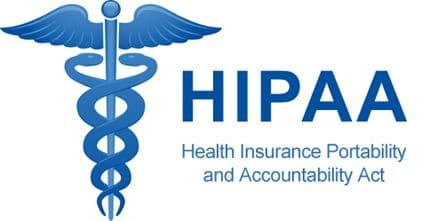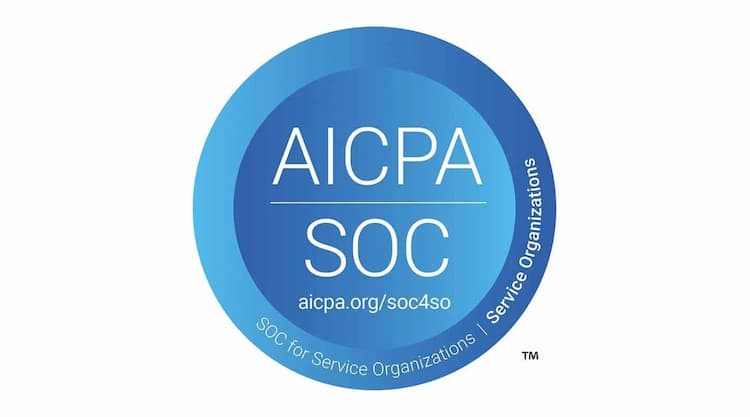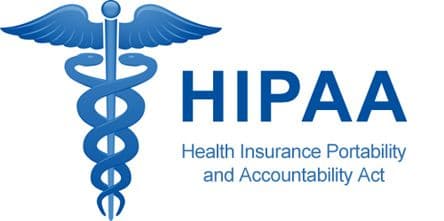19 JAN. 2024
BY PAMELA S.
SHARE
UNDERSTANDING SOC 2 COMPLIANCE: THE ESSENTIALS
SOC 2 is like a security badge for organizations, especially in the tech world. It’s a set of rules companies follow to make sure customer data stays super safe. Think of it as a promise to build a fort around data and information. Created by accounting experts belonging to the American Institute of Certified Public Accountants AICPA), SOC 2 checks the quality of security controls every day to maintain serious protection of data.
What does SOC 2 stand for?
SOC 2, short for System and Organization Controls 2, is like a security superhero cape created by the American Institute of Certified Public Accountants (AICPA). It's designed to ensure organizations have top-notch security measures, minimizing the chances of a security breach. The name SOC 2 is all about checking how an organization's data security controls work in their technical systems and everyday operations.
What is SOC 2 compliance?
When you achieve your SOC 2, it means you've implemented the right security controls and had them thoroughly examined by an independent auditor. This auditor evaluates your data security based on five key criteria, also known as the five Trust Services Criteria (TSC):
- Security (CC): Ensures your systems and data are shielded from unauthorized access and disclosure.
- Availability (A): Confirms that your information and systems are readily available for their intended use.
- Confidentiality (C): Guarantees the confidentiality of sensitive information. Processing integrity (PI): Verifies that data processing is complete, valid, accurate, and timely.
- Privacy (P): Ensures the protection of consumer data and promises transparency about its collection, use, retention, and disposal.
Your auditor evaluates your information security against the five Trust Services Criteria (TSC). Each TSC category encompasses a range of practices and standards. The security criteria, commonly referred to as the common criteria, are obligatory for all SOC 2 reports. The other four criteria categories only need inclusion if they are pertinent to your organization's products and services. For instance, if confidentiality is relevant to your business it should be added to the scope of your SOC 2 report.
Who needs SOC 2 compliance?
While SOC 2 compliance isn't mandated by law and doesn't incur fines or penalties for non-compliance, it stands as a voluntary yet esteemed standard, especially for enterprises dealing with customer data. The industries commonly aligning with SOC 2 include:
- SaaS companies
- Business intelligence and analytics providers
- Managed IT service providers
Acquiring a SOC 2 report signifies a commitment to security, earning trust from prospects, customers, and partners. Typically, requests for a SOC 2 report precede business agreements, emphasizing its significance in North America and reflecting a shared expectation within the region.
What are the benefits of SOC 2?
While SOC 2 compliance is not mandated by law, many customers insist on reviewing your SOC 2 report before entering into business agreements with you. Here are three reasons why a SOC 2 report holds importance for both you and your customers:
Cultivating a Trusted Reputation
If your business involves managing, processing, or handling customer data, establishing trust is crucial before gaining access to that data. In the event of a data breach that jeopardizes their data, your customers' businesses may suffer. SOC 2 compliance serves as evidence to stakeholders that you've implemented necessary precautions to avert breaches and safeguard their data.
Unlocking Revenue Opportunities
SOC 2 compliance not only showcases trustworthiness to prospects and partners, but also opens doors to deals that specifically require SOC 2 attestation. Numerous large organizations, particularly in North America, demand to see a vendor's SOC 2 before considering collaboration. Even if not explicitly requested, possessing a SOC 2 report provides a competitive edge, assuring prospects and customers that their data is safer in your systems than with non-compliant competitors.
Establishing a Robust Security Infrastructure
SOC 2 facilitates the implementation of a robust information security infrastructure. Preparation for the audit involves adopting best practices and safeguards that significantly reduce the risk of a data breach and its costly consequences.
How long does it take to get a SOC 2?
The typical duration for the SOC 2 process ranges from six months to a year, starting from the initiation of control preparation until the finalized SOC 2 report is received. This timeline involves identifying missing controls, establishing security controls, conducting tests, collecting evidence, and selecting an auditor. After finding an auditor and defining the audit window, their assessment generally spans four to six weeks. However, the implementation of compliance automation can effectively halve this timeline. By utilizing SKELDUS's trust management platform, you can optimize your SOC 2 audit process. Here's an outline of what an automated SOC 2 process entails:
- Integrate your infrastructure into the SKELDUS platform through our pre-built integrations.
- Evaluate your risk comprehensively from a unified view.
- Receive in-platform notifications highlighting areas of non-compliance.
- Obtain a checklist of actions to guide necessary adjustments.
- Automate evidence collection and consolidate all documents in one location.
- Identify a SKELDUS-vetted auditor within the platform.
- Simplify reviews by providing your auditor with information from your Trust Center.
- Expedite your SOC 2 completion by half, streamlining the entire compliance journey.
What are the five SOC 2 trust principles?
Embarking on the SOC 2 compliance journey involves a crucial step: defining the scope of your report by identifying which of the SOC 2 trust principles are applicable to your organization. Let's dive into each principle and the specific criteria they encompass.
Security
The security trust principle forms the backbone of SOC 2. With over 30 mandatory criteria, it ensures your system is a fortress against unauthorized access. Think access controls, physical security, and data encryption. Example criteria include assessing the potential for fraud in risk assessment and ongoing evaluations of internal control components.
Availability
Availability ensures that your data is accessible when needed and covers recovery in case of technical hiccups. Criteria involve authorizing, designing, testing recovery plans, and maintaining infrastructure for uninterrupted data access.
Confidentiality
All data must be shielded, but confidentiality takes it a step further. It safeguards confidential information, ensuring business secrets, intellectual property, or personal data remains classified. Criteria range from identifying to disposing of confidential information.
Processing Integrity
Relevant for businesses processing or analyzing data, this principle ensures the accuracy and reliability of processed or analyzed data. Criteria include implementing policies for system inputs, controls over completeness and accuracy, and storage in accordance with specifications.
Privacy
Privacy protects consumer rights over their data. Criteria include obtaining explicit consent for personal information requests and limiting the use of personal information to identified purposes. In essence, these trust principles form the bedrock of SOC 2, guiding organizations to fortify their data practices.
How do I get a SOC 2?
Achieving SOC 2 compliance involves undergoing a comprehensive audit process. This entails enlisting the services of a third-party auditor to assess your information security measures and generate a report outlining your security stance and the controls implemented to safeguard your organizational and customer data. However, thorough preparation is essential before undergoing the audit. Here’s a condensed overview of the complete SOC 2 process:
- Define the scope of your SOC 2 report, determining which criteria are pertinent to your business.
- Implement the required controls and conduct thorough testing.
- Engage an auditor from an accredited AICPA (American Institute of Certified Public Accountants) firm.
- Gather evidence and documentation to support your compliance efforts.
- Undergo a SOC 2 audit and receive the resulting SOC 2 report.
What is a SOC 2 report?
A SOC 2 report is a documentation confirming your adherence to SOC 2 standards. To obtain a SOC 2 report, engage an accredited AICPA auditor who will assess your data security measures and record the implemented SOC 2 controls. The auditor subsequently compiles a report detailing their findings and attesting to whether your organization aligns with SOC 2 criteria.
SOC 2 Type 1 vs. SOC 2 Type 2 reports
SOC 2 reports come in two types: SOC 2 Type 1 and SOC 2 Type 2. A SOC 2 Type 1 report outlines your security controls at a specific moment—the date of your audit. While it confirms the implementation of necessary controls, it doesn't delve into their effectiveness. Although SOC 2 Type 1 is often quicker and more cost-efficient than SOC 2 Type 2, it may be perceived as less valuable for larger firms. A SOC 2 Type 2 report evaluates your security controls over a designated time frame, examining their efficacy. You determine the audit window duration based on your controls' operational period, ranging from three to twelve months. This report offers additional assurance to stakeholders by showcasing the effectiveness of your controls over time.
What is the purpose of a SOC 2 audit?
Obtaining a SOC 2 report entails navigating through the SOC 2 audit process. This requires enlisting the services of a third-party auditor to evaluate your existing information security measures, compile a comprehensive document outlining your security stance, and take stock of implemented controls that safeguard your organizational and customer data.
Many businesses pursue SOC 2 compliance when prompted by prospects seeking assurance. Prospective clients typically request a SOC 2 report before entering into business agreements to determine how you intend to protect their data. Successfully completing a SOC 2 audit serves as evidence that your established policies are reliable and effective. Despite the perceived lengthiness of a SOC 2 audit, the investment often proves worthwhile, facilitating deal closures and fostering trust with customers.
What is the process for a SOC 2 audit?
The SOC 2 audit process depends on your organization's structure, size, and industry. Unlike other compliance standards, SOC 2 offers a nuanced approach, allowing organizations to tailor controls and requirements to their specific business needs.
Generally, a SOC 2 auditor will follow these steps:
- Scope Agreement: Review and establish mutual agreement on the audit's scope.
- Information Collection: Gather information about your systems and operations, including relevant documents.
- Audit Planning: Develop an audit plan tailored to your organization.
- Criteria Identification: Determine which of the five Trust Services Criteria are applicable to your organization.
- Control Investigation: Investigate and test each security control to assess SOC 2 alignment.
- Evidence Collection: Collect evidence to document your security posture.
- Reporting: Prepare a comprehensive report detailing the auditor's findings.
This process allows organizations to customize their approach, ensuring alignment with SOC 2 requirements while addressing specific business considerations.
Who can perform a SOC 2 audit?
The execution of a SOC 2 audit necessitates the expertise of a certified public accountant (CPA) affiliated with a firm accredited by the American Institute of CPAs (AICPA). It is imperative that this professional operates independently as a third-party entity separate from your organization.
What is the outcome of a SOC 2 audit?
Following the completion of a SOC 2 audit, you will be furnished with a comprehensive SOC 2 report detailing the auditor's discoveries. The report comprises the following key sections:
- Independent Service Auditors' Report: This section affirms the occurrence of the audit and outlines specifics regarding the audit's scope, as well as the responsibilities of both the company and the auditor.
- Management Assertion: This segment involves your company's affirmation of the report's accuracy, encompassing controls and descriptions.
- System Description: Describing the scope of the SOC 2 report, this section provides crucial information about your employees, processes, technology, and controls supporting your products and services.
- Description of Criteria: This part presents a catalog of assessed controls, details on their testing procedures, and the outcomes of these tests. Any exceptions identified by the auditor are also documented here.
- Appendices: Optional pages offering supplementary information that your company deems beneficial for recipients of your SOC 2 report. This section may include the management's response to exceptions highlighted by the auditor in the preceding section.
How long does a SOC 2 audit take?
The SOC 2 compliance journey typically spans six months to a year, from the initial preparation of controls to the delivery of the completed SOC 2 report. This timeline involves a meticulous process: identifying missing controls, configuring security measures, conducting tests, collecting evidence, and ultimately engaging an auditor. The auditor's assessment, once initiated, generally takes four to six weeks to conclude. Nevertheless, the timeline can be significantly shortened by leveraging compliance automation.
Picture this automated journey:
- Integration Prowess: Seamlessly connect your infrastructure to SKELDUS's platform using its pre-built integrations.
- Holistic Risk Assessment: Assess your risk comprehensively through a unified view provided by the platform.
- Proactive Non-Compliance Alerts: Receive in-platform notifications identifying areas of non-compliance, ensuring a proactive approach.
- Actionable Checklists: Obtain actionable checklists guiding you through necessary changes based on the identified areas of non-compliance.
- Effortless Evidence Collection: Automate evidence collection and centralize all pertinent documents within the platform.
- Auditor Discovery: Discover a SKELDUS-vetted auditor seamlessly through the platform.
- Streamlined Reviews: Expedite the review process by providing your auditor with information directly from your Trust Center.
Finally, SOC 2 compliance guarantees security. It drives process improvement, strengthens risk management, and empowers your team to stand behind your security commitments with confidence. This not only protects your business but also empowers your employees to focus on what they do best - delivering quality services and innovative solutions.

26 JAN. 2024
BY PAMELA S.
UNDERSTANDING HIPAA COMPLIANCE: THE ESSENTIALS
If you've engaged with health-related services in the last couple of decades, HIPAA, the Healthcare Insurance Portability and Accountability Act, is likely a term you're familiar with. For companies involved in healthcare, HIPAA compliance is the linchpin of a robust security strategy.

19 JAN. 2024
BY PAMELA S.
UNDERSTANDING SOC 2 COMPLIANCE: THE ESSENTIALS
SOC 2 is like a security badge for organizations, especially in the tech world. It’s a set of rules we follow to make sure your data is super safe with us. Think of it as our promise to build a fort around your information! Discover how SKELDUS can help you in achieving SOC2 compliance!

